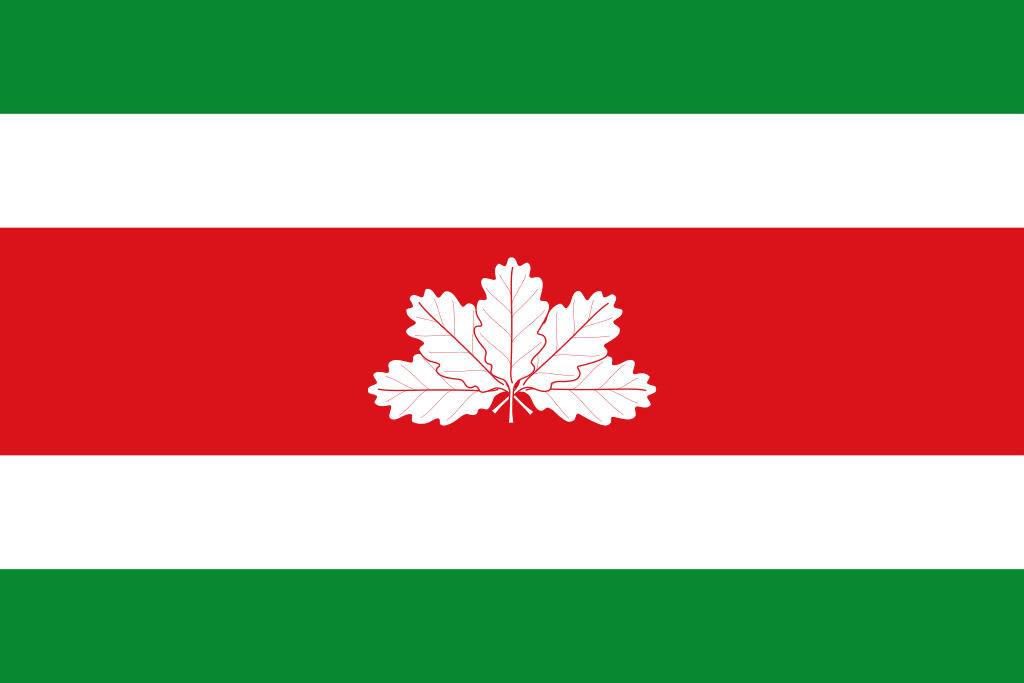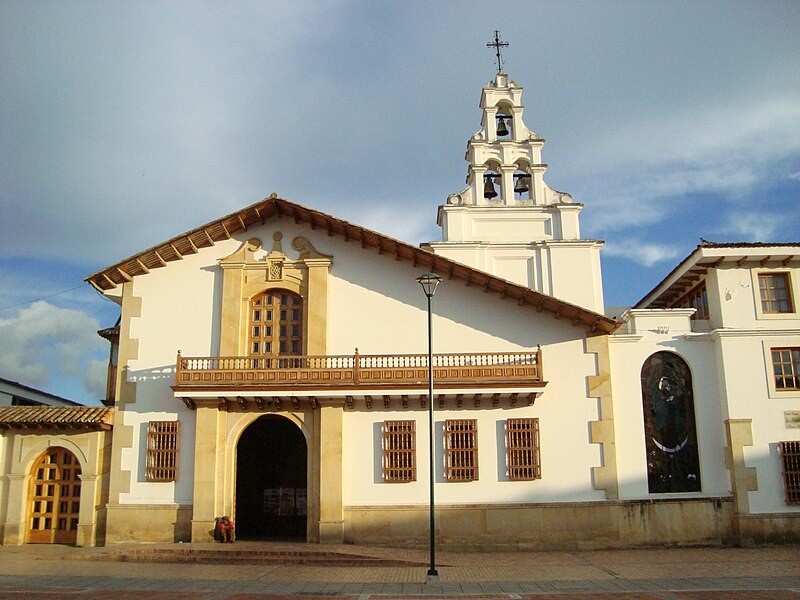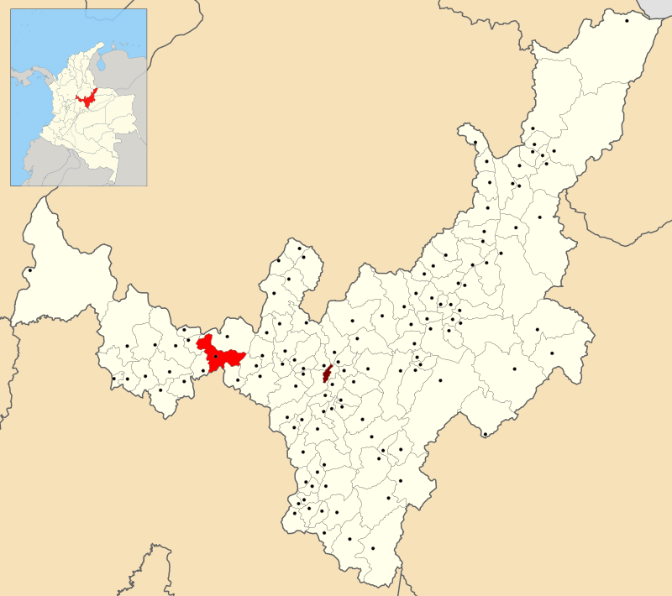CHIQUINQUIRÁ
Department
Boyacá, Colombia

Flag of the city
The flag of Chiquinquirá is colored red, white, and blue. The white color extend as an arrow from the left hand side to the center of the flag.

Seal of the city

Slogan of the city
The city does not have a particular slogan but is referred to as “Place of swamps covered with fog”
History

Chiquinquirá is a town revered for its rich cultural and religious heritage. Steeped in history and adorned with colonial charm, Chiquinquirá invites visitors to explore its sacred sites and embrace the warmth of its community. At the heart of Chiquinquirá’s identity is the Basílica Mariana de Chiquinquirá, a majestic basilica that houses the venerated image of the Virgin of Chiquinquirá. This image, also known as La Chinita, is a revered religious icon associated with numerous miracles and holds immense significance for the faithful. Pilgrims and visitors alike are drawn to the basilica, creating a spiritual haven that echoes with prayers and devotion. The Basilica, an architectural gem, stands as a testament to the town’s devotion. Its colonial-inspired design and intricate details provide a backdrop for religious ceremonies and cultural events. Pilgrims from across Colombia and beyond undertake journeys to seek solace and blessings in the presence of the Virgin of Chiquinquirá.
Chiquinquirá comes alive during religious festivals, especially on July 9th, the Feast of the Virgin of Chiquinquirá. The town bursts with color, music, and fervor as processions wind through its streets, showcasing a vibrant tapestry of faith and cultural celebration. Beyond its religious significance, Chiquinquirá boasts a charming colonial ambiance. Strolling through its streets, visitors encounter well-preserved colonial architecture, including colorful houses and historic buildings. This architectural heritage offers a glimpse into the town’s past and creates a picturesque backdrop for its cultural events. Chiquinquirá’s cultural tapestry is woven with traditions that reflect the blending of indigenous and Spanish influences. Local crafts, traditional music, and culinary delights contribute to the town’s cultural richness, inviting visitors to immerse themselves in the authentic flavors of Chiquinquirá. Chiquinquirá’s allure extends beyond religious significance; it beckons those seeking a blend of history, spirituality, and cultural exploration. The town’s serene ambiance and the Basilica’s grandeur make it a pilgrimage destination that resonates with both religious and cultural enthusiasts.
In a tragic turn of events, the town faced a devastating incident in November 1967. Eighty-one individuals, predominantly children, fell victim to fatal poisoning, and hundreds more suffered severe illness. The cause of this calamity traced back to bread made with flour contaminated by a powdered insecticide. Investigations revealed that the flour, delivered by a Bogotá truck driver, had been unknowingly tainted. Subsequent legal action targeted the truck driver and the owner of the bakery responsible for producing and selling the toxic bread to local residents. The incident marked a somber chapter in Chiquinquirá’s modern history, leaving scars that the community continues to grapple with.
Geography of the city
Chiquinquirá is situated at coordinates 5°37′08″N and 73°49′12″W. The town enjoys a lofty elevation of 2,556 meters (8,386 feet) above sea level, providing both breathtaking views and a refreshing mountain climate. The municipality and town of Chiquinquirá span an area of 165 square kilometers (64 square miles). Within this expansive territory, the urban core covers 6.38 square kilometers (2.46 square miles). The town’s layout, characterized by a harmonious blend of urban and natural spaces, reflects the balance between community life and the surrounding Andean environment. As of the 2018 census, Chiquinquirá is home to a population of 56,054 residents. The population density stands at 340 individuals per square kilometer (880 per square mile) across the entire municipality. In the urban areas specifically, such as the bustling town center, the population density reaches 7,700 individuals per square kilometer (20,000 per square mile), emphasizing the vibrant and dynamic nature of the urban landscape.

Population
56,054 (2018 Census)
58,143 (2023 projection)
One photo representative of the city

Etymology
The etymology of Chiquinquirá, rooted in the Chibcha language, unveils a poetic description. The name translates to “Place of swamps covered with fog,” evoking a sense of mystery and enchantment associated with the town’s natural surroundings. This linguistic heritage not only encapsulates the geographical features but also reflects the deep connection between the indigenous Chibcha culture and the rich tapestry of Chiquinquirá’s landscape, where mist-clad marshes contribute to the town’s unique identity.
What the city is known or famous for

Chiquinquirá is primarily renowned for its religious and cultural significance associated with the Basilica of the Virgin of the Rosary of Chiquinquirá. The basilica houses a revered image of the Virgin Mary, known as the Virgin of Chiquinquirá or La Chinita. Pilgrims and visitors from across Colombia and beyond flock to Chiquinquirá to pay homage to this sacred image, and the town has become a significant pilgrimage site. The Virgin of Chiquinquirá is considered a symbol of faith and miracles, and her feast day on July 9th is celebrated with religious processions, ceremonies, and cultural events. The basilica itself is an architectural gem and a focal point for religious tourism. Beyond its religious significance, Chiquinquirá is also known for its picturesque surroundings nestled in the Andean Highlands, offering visitors a tranquil and scenic retreat. The town’s cultural heritage, influenced by indigenous roots and Spanish colonial history, further contributes to its unique identity.
